Saint-Paul-de-Vence 作者: 来源: 发布时间:2021-09-27
I.Population and Area
Region: Provence-Alpes-Côte d'Azur
Department: Alpes-Maritimes
Code Insee : 06128
Code postal : 06570
Total Area: 7.26km²
Population in 2017: 3 477
Population Density: 479 /km²
Details: The altitude of the city hall of Saint-Paul is approximately 181 meters. Its surface area is 7.26 km². The latitude and longitude of Villers are 43.696 degrees North and 7.122 degrees East. The towns and villages near Saint-Paul are: La Colle-sur-Loup (06480) at 1.84 km, Vence (06140) at 3.22 km, Cagnes-sur-Mer (06800) at 3.86 km, Villeneuve-Loubet (06270) at 3.88 km, La Gaude (06610) at 3.93 km.
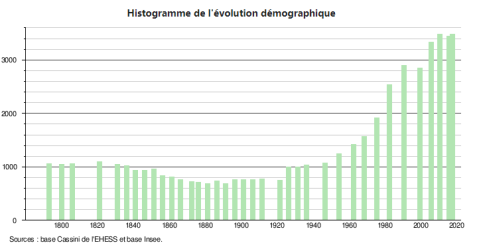
Histogram of demographic change
Sources :http://www.cartesfrance.fr/carte-france-ville/06128_Saint-Paul.html
II.Natural Geography
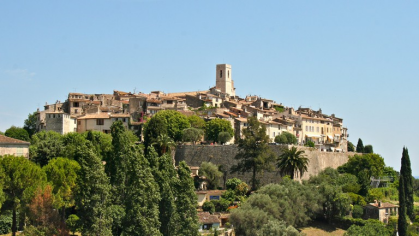
Geographical environment: The village of Saint-Paul-de-Vence rises on a rocky outcrop located between the Alps and the Mediterranean, to the west of which flows the Malvan, a tributary of the Cagne. Because of its proximity to the town of Vence and to distinguish it from other towns bearing the name of Saint-Paul, the town has long been unofficially called "Saint-Paul de Vence" but the name of Saint-Paul-de-Vence has only been official since 2011. Under the Revolution, we wrote Sainpaul. Saint-Paul de Vence is ideally located for exploring and holidaying on the French Riviera. Saint-Paul de Vence is located just 7km from the Mediterranean Sea, inland of Cagnes sur Mer, and between the coastal towns of Nice and Antibes.
Climat: The Saint-Paul-de-Vence lies on 137m above sea level The climate in Saint-Paul-de-Vence is warm and temperate. There is more rainfall in the winter than in the summer in Saint-Paul-de-Vence. According to Köppen and Geiger, this climate is classified as Csb(Warm-summer Mediterranean climate). The temperature here averages 14.2 °C | 57.6 °F. Precipitation here is about 836 mm | 32.9 inch per year. The driest month is July, with 18 mm | 0.7 inch of rain. With an average of 121 mm | 4.8 inch, the most precipitation falls in November. July is the warmest month of the year. The temperature in July averages 21.7 °C | 71.1 °F. January has the lowest average temperature of the year. It is 7.4 °C | 45.3 °F.
Transport:
(1) By bus: Saint-Paul-de-Vence is just one hour away from Nice by bus. Take the Bus Line 400 Vence (par St Paul) which goes to both towns, or the Bus Line 94 Halte Routière de l’Ara which goes directly to Vence and doesn’t stop at Saint-Paul-de-Vence. You catch them both from the rue Verdun/Albert 1ere bus stop, which is between the Meridian Hotel and the start of the Promenade du Paillon gardens, or catch them at one of the stops along the Promenade des Anglais. The bus leaves every 30-45 minutes on weekdays and every 45 minutes to an hour on Saturdays, Sundays and French holidays.
(2) By train: The nearest station is Cagnes sur Mer. Then you can take bus n°400 (Cagnes sur Mer / Station Square du 8 mai SNCF to Saint-Paul de Vence in 15 min). Consult or download the schedule for the 400 bus between Nice and Vence via Saint-Paul de Vence. Paris-Nice direct on the TGV direct links to major towns and cities shuttle train from Antibes/Nice station. Regional express trains (TERs) offer fast services between all of the main towns along the French Riviera from Cannes to Ventimiglia. Timetables on www.ter-sncf.com/paca or by phone +33 (0) 800 11 40 23 (free call from a landline) from 7am to 7pm, Monday to Friday. Reserve your train ticket by phone 3635 or on www.voyages-sncf.com.
(3) Airports: The closest airport is Nice Côte d’Azur Airport. There are 3 options from Nice Côte d’Azur Airport :
①Take a taxi - Reserve a taxi from Nice Airport's taxi rank : +33 (0) 4 93 13 78 78 for more information.
②Catch the number 400 bus - Bus stop «Aéroport Promenade»
- From Terminal 1 it takes about 10 to 15 minutes to walk to the bus stop on the Promenade des Anglais.
- From Terminal 2, take the free airport shuttle to Terminal 1. It will then take about 10 to 15 minutes to walk to the bus stop called "Aéroport Promenade"
Nice Airport - Saint-Paul de Vence: the journey takes about 1 hour.
Sources :https://en.climate-data.org/europe/france/provence-alpes-cote-d-azur/saint-paul-de-vence-67336/
https://www.saint-pauldevence.com/en/how-to-get-here/access-car-parks/
III.Economy
Saint-Paul-de-Vence Accounting income in 2018 was 1 155 840 €, or 326 € per inhabitants.
Self-financing capacity in 2018 was 1 319 370 €, or 372 € per inhabitants.
Income: According to Insee, in 2014, the inhabitants of Saint-Paul-de-Vence earn on average € 3 306 net per month, or € 39 669 net per year,higher than the average of France.
Unemployment rate: In 2016, its unemployment rate was 9.6%, which was much lower than the French average of 11%.
Companies: In 2017, the total number of companies in Saint-Paul-de-Vence was 562, and there were 55 new companies.
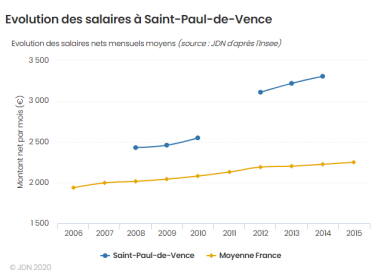
Evolution of average monthly net wages
Sources :
http://www.journaldunet.com/management/ville/saint-paul-de-vence/ville-06128
http://www.journaldunet.com/management/ville/saint-paul-de-vence/ville-06128/budget
http://www.journaldunet.com/management/ville/saint-paul-de-vence/ville-06128/entreprises
IV.Industrial Characterisitics
Saint-Paul-de-Vence is one of the high places of tourism, especially for its many art galleries, which has the consequence of emptying the village of its traditional shops. Saint-Paul-de-Vence also shelters on its heights many villas which belong to many French and foreign millionaires.
Tourism: The village of Saint-Paul, located in the hinterland of Nice, is one of the three most beautiful villages in France, along with Mont St-Michel and Vézelay. It owes its reputation both to its well-restored old stones, to its Provencal setting and to the artists who have largely contributed to its fame. The counterpart of so many assets for a small village is the large concentration of tourists from all over the world. This does not prevent making Saint-Paul de Vence, an essential stopover during your stay in the Alpes-Maritimes department.
Sources: http://www.journaldunet.com/management/ville/saint-paul-de-vence/ville-06128
V.Attractions
1.The Village
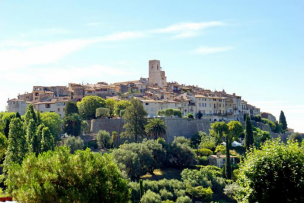
The walls that raise the village on its roost are from the mid-15th century, and have not been changed since they were built. Above them, Saint-Paul-de-Vence isn’t much more than one street, Rue Grande, with enticing crevasse-like alleys and stairways branching off it. The art connection remains strong, and you’ll pass restaurants, galleries and cute shops selling materials for budding artists.
On the southernmost edge is a terrace with stirring views of a trademark Provence landscape: Look north and you’ll make out the limestone bulk of the Baou de Saint-Jeannet . Directly beneath you here is the cemetery where Marc Chagall is buried.
Source: https://www.thecrazytourist.com/15-best-things-saint-paul-de-vence-france/
2.Fondation Maeght
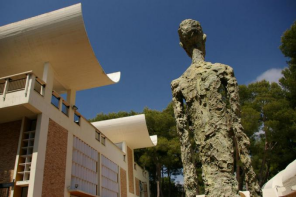
The Fondation Marguerite et Aimé Maeght is France’s most important private art foundation and among the world-leading cultural institutions. It was created by Aimé and Marguerite Maeght, a visionary couple of publishers and art dealers, who represented and were friends with some of the most important artists of the 20th century, including Joan Miró, Alexander Calder, Fernand Léger, Georges Braque, Alberto Giacometti, Marc Chagall and many others. The Maeght Foundation was inaugurated on July 26, 1964, by Charles de Gaulle’s legendary Culture Minister André Malraux, who was a close friend of the Maeghts. The Foundation was France’s very first private art institution and was modeled after American institutions such as the Guggenheim Foundation, the Barnes Collection or Phillips Collection, which the Maeghts visited during their frequent trips to the United States in the 1950s.
Located near the famous village of Saint-Paul de Vence, 25 km from Nice, the Fondation Maeght receives more than 100,000 visitors every year in a unique architectural complex designed by Josep Lluís Sert, showing modern and contemporary art in all its diversity. Painters and sculptors worked in collaboration with the Catalan architect to create a place where art, nature and architecture blend in perfect harmony. The Foundation’s highlights include the Giacometti courtyard, featuring an exceptional ensemble of sculptures by the Swiss artist, the Miró labyrinth, a whimsical sculpture garden by the Catalan artist, monumental mural mosaics by Marc Chagall and Pierre Tal Coat, a pool designed by Georges Braque as well as a mechanical fountain designed by Pol Bury. Visitors can also enjoy the sculpture garden, with a rotating selection of works by Calder, Takis, Miro, Arp and other, two rooftop terraces with spectacular views, exhibition galleries hosting temporary exhibition as well as selected works from the permanent collection, a consecrated chapel, an art library and a gift and book shop.
The Fondation Maeght also has one of the largest collections of paintings, sculptures, and works on paper of modern and contemporary art in Europe with more than 13,000 works. A tightly curated selection of works from the permanent collection is on view at all time in the exhibition galleries. Artworks from the collection are also regularly included in temporary exhibitions either at the Foundation and or in other institutions around the world. Since its opening in 1964, the Fondation Maeght has organised more than 140 international exhibitions, including major themed exhibitions (Living Art in the United States, André Malraux and the imaginary museum, Art in motion, The Nude in the 20th century, Russia and the Avant-Gardes, The Adventures of Truth, etc.), monographic exhibitions exploring the work on the great masters of modern art (Kandinsky, Chagall, Calder, Matisse, de Staël, Bonnard, Giacometti, Miró, Braque, Dubuffet, etc.). as well as exhibitions of contemporary artists (Yan Pei-Ming, Pier Paolo Calzolari, Takis, Jacques Monory, Gérard Garouste, Christo and Jeanne-Claude, Eduardo Arroyo, Lee Bae).
A private institution, the Fondation Maeght does not receive any public subsidies and and depends entirely on admission fees and private donations. Individual and corporate donations are tax-deductible and contribute to the preservation and restoration of its architectural and artistic heritage as well as well as the development of an inclusive and engaging cultural program. Created in 1966 by Marguerite Maeght, the Société des Amis gathers the Foundation's supporters and provides financial support to the Foundation across a wide range of projects. Since 1982, Aimé and Marguerite’s son Adrien Maeght, has been President of the Foundation's Board of Trustees, which includes elected members as well as representatives of the French government.
Address:Fondation Maeght, 623 Chemin des Gardettes, 06570 Saint-Paul-de-Vence, France
Source: https://www.fondation-maeght.com/en/fondation-maeght/about
3.The Folon Chapel
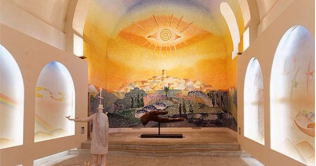
Towards the end of his life the Belgian artist Jean-Michel Foulon transformed the interior of the 17th-century Chapelle des Pénitents Blancs at the top of the village. On the street it’s an unassuming old church, but the decoration inside is almost luminescent. Folon worked with artisans to create the stained glass windows, and decorated the chapel with paintings, sculptures and vibrant mosaics. The chapel is an extraordinary gateway into Folon’s world, communicating his fascination with light and the spiritual. You’ll also see just how many disciplines Folon mastered, from painting and sculpture to ceramics, tapestries and glasswork.
Discover the admirable design work of Jean-Michel Folon by visiting this chapel, and learn more about an artist who nurtured strong links with Saint-Paul for over thirty years. Folon's close collaboration with village craftsmen, his stained glass designs, sculptures, and fascination with light, are all keys to understanding his world and his conception of art. The White Penitents' Chapel was Jean-Michel Folon's last design project before his death in 2005. It is also the last chapel in the Midi to have been decorated by an artist.
Address: 2 Montée de la Castre, 06570 Saint-Paul-de-Vence, France
Website: https://www.saint-pauldevence.com/en/fiches/musees-et-lieux-de-visites/the-folon-chapel-2/
Source: https://www.thecrazytourist.com/15-best-things-saint-paul-de-vence-france/3/
4.The Rosary Chapel
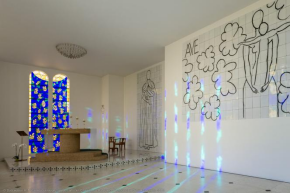
The Chapelle du Rosaire de Vence (Chapel of the Rosary), often referred to as the Matisse Chapel or the Vence Chapel, is a small Catholic chapel located in the town of Vence on the French Riviera. It was dedicated to the Dominican Order. The church was built and decorated between 1947 and 1951 under a plan devised by Henri Matisse. It houses a number of Matisse originals and was regarded by Matisse himself as his "masterpiece". While the simple white exterior has drawn mixed reviews from casual observers, some regard it as one of the great religious structures of the 20th century.
On a hillside north of Vence is a small chapel designed and decorated in the late-1940s by none other than Henri Matisse. He started the project in his 70s at the request of a nun who had looked after him while he was recovering from an illness earlier that decade. Matisse considered the building his masterwork, and everything you see was done by his hand (the stone altarpiece, crucifixes, candle holders and even the priests’ vestments). The exhibition inside shows how the chapel was designed and built, and you can behold Matisse’s three large murals, portraying the Virgin and Child, Stations of the Cross and St. Dominic.
Address: 466 Avenue Henri Matisse, 06140 Vence, France
Source: https://www.thecrazytourist.com/15-best-things-saint-paul-de-vence-france/4/
VI.History
It was the Greeks who were responsible originally for setting up the Mediterranean areas of France, it was they also who brought in key components to our ideas of this region such as olive trees. In BC times they used these areas like Cannes and Marseille as ports. But the Romans came in during the 2nd century BC and took over, as they were doing in most of southern Europe. They set up true civilizations and cities here, put up churches and built roads.
Even major powers come to an end however, and the time for the Roman Empire to fall was in 476AD; the fall caused some trouble for the French areas. Invasions were ongoing and an overall struggle and confusion over who had power was the theme. But at the same time this forced villagers to come together and put their energy into their towns and develop their own sense of culture. St. Paul was one of these and can attribute its true start in the 9th century. Soon enough the Chateau de St. Paul was constructed, today its dungeon still stands.
St. Paul de Vence officially became a part of France in 1482 as was the rest of Provence. Just before that in 1418 the city was declared royal by King Louis III as it played an important role in military administration.
Restorations went into effect however, in the 1800s to restore St. Paul de Vence back to charm and eliminate remants of its a military town look. In the early 1900s it became a haven for artists; today the famous Marc Chagall can be visited there where he lies to rest.
Its amazing location in between Nice and Cannes fortified it as a major tourist spot and artists still love it today.
Sources: https://www.tripadvisor.com/Travel-g187240-s203/St-Paul-De-Vence:France:History.html
VII.Other information
Saint-Paul-de-Vence has long been a haven of the famous, mostly due to the La Colombe d'Or hotel,whose former guests include Jean-Paul Sartre and Pablo Picasso. During the 1960s, the village was frequented by French actors Yves Montand, Simone Signoret and Lino Ventura, and poet Jacques Prévert.
Saint-Paul is also well known for the artists who have lived there, such as Jacques Raverat, Gwen Raverat and Marc Chagall and more recently the couple Bernard-Henri Lévy and Arielle Dombasle. Former Rolling Stones bassist Bill Wyman has a home there. American writer James Baldwin died there in 1987. British actor Donald Pleasence lived there until his death in 1995.
VIII.Contact information
Address of Saint-Paul-de-Vence town hall:
Mairie de Saint-Paul
Place de la Mairie
06570 Saint-Paul-de-Vence
Opening Hours of the town hall:
Monday to Friday 9:00 a.m. to 2:00 p.m.
Phone number: 04 93 32 41 00
Fax: 04 93 32 64 58
Email: mairie@saint-pauldevence.fr
Website: http://www.saintpauldevence.org
Mayor : Joseph Le Chapelain (Mandat : 2014-2020)
Sources :http://www.cartesfrance.fr/carte-france-ville/06128_Saint-Paul.html#mairie
